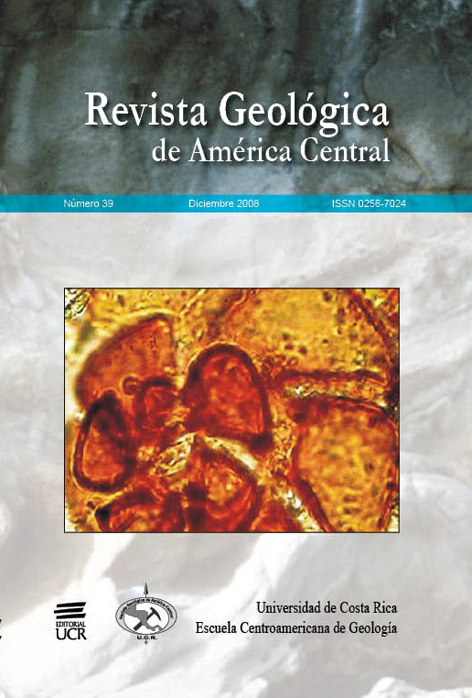Abstract
Different organic walled non-pollen palynomorphs were identified from thirteen surface silty and sandy sediment samples in the southern part of Costa Rica, where mangroves are widespread. Non-pollen palynomorphs are numerous and diverse in comparison with the scarce pollen and spores of vascular plants. They are represented by dinoflagellate cysts, algal palynomorphs of Chlorophyta, cyanobacteria, fungal spores and hyphae, microforaminifers, scolecodonts and phytoliths. The most frequently represented are Botryococcus and microforaminifers whose frequen- cies change depending on the salinity of environments related to marine influence. Chlamydospores of the fungus Glomus are related with erosive processes. Cyanobacteria of the Rivularia-type may be connected to an increase in eutrophication by organic phosphate within an estuary. Non-pollen palynomorphs data are important as a palynological complement in the coastal regions of Costa Rica. Non-pollen palynomorphs are associated with pollen of Rhizophora, Lagencularia, Avicennia, Poaceae, Cyperaceae, and spores of various mangrove vegetation ferns.Comments
Downloads
Download data is not yet available.






